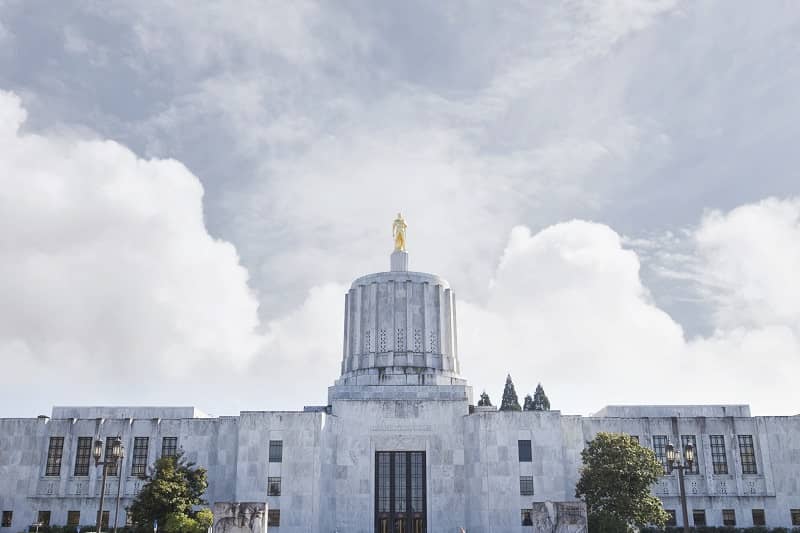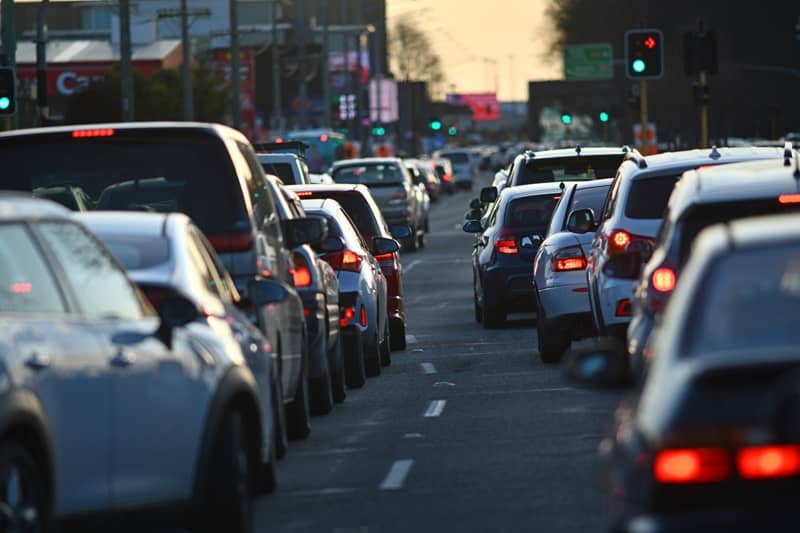Presented to a Joint Hearing of the House Committee on Health Care and the Senate Committee on Health Policy and Public Affairs
By Steve Buckstein
January 26, 2007
Good afternoon Mr. Chairman, Madam Chair, and Committee members.
My name is Steve Buckstein. I’m Senior Policy Analyst and founder of Cascade Policy Institute, a public policy research organization headquartered in Portland.
Before addressing the Healthy Kids Program specifically, I think we can all agree that our current health care system is dysfunctional. We may not agree on the causes, however, or the cures.
I have little in common politically with former Governor Kitzhaber, but he has diagnosed many of the problems in our health care system correctly:
- He believes that the two big federal health care programs, Medicare and Medicaid, no longer make sense.
- He warns that Medicaid has become the single biggest item in most state budgets, and it’s squeezing out other programs.
- He understands that employer-based coverage no longer makes sense.
He’s right on all three counts.
Regarding the Healthy Kids Program specifically, Dr. Kitzhaber says that “…covering all children is an important and worthy goal [but] we also need a way to ensure that expanding coverage to kids is financially sustainable over time. Simply expanding insurance coverage does not reduce the escalation in costs that lies at the root of the problem.”
He looks at the foundering American health care system and sees a sinking ship.
Some people are already in the water, including uninsured kids, and need help fast. But he also says that it’s not enough to rush out with legislative lifeboats and pull a relative few to safety.
“You still have to save the ship.”
While Dr. Kitzhaber has diagnosed the illness correctly, I don’t believe his cure will work, but we’ll have time to discuss that later. Cascade recently published two proposals, by Randy Pozdena and Steve Gregg, which may be more appropriate health care reforms than the Kitzhaber plan or the other major plans you’ll be looking at this session. You should each have copies of our proposals, and they’re on our website at cascadepolicy.org.
For now, putting uninsured kids in a lifeboat may help them in the short run, but it won’t help for very long, and the Healthy Kids Program could actually make the entire health care ship sink even faster.
I believe this for several reasons:
First, paying for kids’ health insurance by taxing smokers may make those kids better off, but it will also make the smokers and their families worse off. As you know:*
- Cigarette smoking adults are more likely to be uninsured than non-smoking adults, thus the cigarette tax will be targeting the very people who already can’t afford insurance for themselves and their families.
- Cigarette smokers are in worse physical condition than non-smokers.
- Cigarette smokers generally have lower incomes and less formal education.
- Cigarette smokers are more likely to be unemployed, or unemployable.
- Cigarette smokers are more likely to be racial minorities.
- In short, paying for children’s health care through a cigarette tax is very regressive, targeting the less educated, lower income, sicker and minority Oregonians. Yet you’re considering taxing them to fund health insurance for kids in families earning up to $70,000 a year.
Bottom line: taxing smokers will make the ship sink faster because it will be harder for them to afford their own health care.
Second, the proposed tax increase almost certainly won’t generate the revenue you hope it will, for at least two reasons:
- Oregon saw more black market and Internet cigarette purchases when taxes were increased in the past. A big new tax increase will accelerate this trend, leaving new revenue far below estimates.
- If Oregon raises its cigarette tax up to the level in Washington state, you’ll lose tens of millions of dollars in already existing tax revenue, and you’ll lose a big chunk of the new revenue you were counting on as Washingtonians stop buying here.
Bottom line: The program will cause one more financial hole in the state budget, which is like another iceberg puncturing the Titanic.
The third problem with this program is that offering free insurance to a new group will put upward pressure on the cost of insurance and health care for everyone else.
Offering people something for free is generally a prescription for misuse and overuse. With no fiscal discipline, Healthy Kids families will tend to make choices that put even more pressure on the system. They may go to the emergency room less often, but they’ll make other poor choices that we can’t anticipate.
Also, why should we assume that families up to 200 percent of the poverty level can’t afford to pay even one dollar for health care? While a number of Oregon Health Plan members did drop coverage rather than pay just a $5 monthly premium, I think we learned the wrong lesson from that. Rather than assume that they couldn’t afford to pay even a modest amount for health care, we should assume that they simply valued other goods and services more than they valued the insurance we offered them. They’d take the insurance if it was free, but wouldn’t bother if the price was anything above zero.
There are hundreds of families in the Portland area earning less than 185 percent of the poverty level who’ve contributed $500 a year or more to match the private scholarships for their children that Cascade Policy Institute facilitates through the Children’s Scholarship Fund. These families are in the same demographic the Healthy Kids Program is targeting. Public schools are free, yet these low income families spend hundreds or thousands of dollars a year to make other choices for their children’s education because they value it. We should ask ourselves why Oregon Health Plan members didn’t — and potential Healthy Kids Program families might not — value the health care services being offered at least enough to pay something for them.
As an aside, over half of Oregon’s currently uninsured kids are eligible for the Oregon Health Plan already, but aren’t enrolled partly because of a complex application process. You can solve that problem without creating an expensive new program and increasing taxes on cigarette smokers.
The fourth problem with the Healthy Kids Program is that it will offer insurance covering regular, routine care in addition to catastrophic care. This perpetuates the perverse incentives in our current health insurance system.
It’s this coverage of routine care that makes health insurance so expensive in the first place. Much of what we call health insurance today is not really insurance at all. It’s simply pre-payment for routine services like check-ups and regular lab tests. The proper function of insurance is to protect us from events that are expensive, relatively unpredictable, and rare. We pool our money to spread the financial risk of catastrophic events, hoping that we never have to file a claim.
In short, health insurance should look more like our auto and homeowners insurance, covering catastrophic care, not daily maintenance.
Why doesn’t our car insurance cover weekly fill-ups at the pump, and regular oil changes? Gas and oil would be quote-unquote “free”, but our insurance premiums would go through the roof. The overall cost of operating our cars would increase substantially because of what’s called the third-party payer problem. We have a third-party payer problem in health care already, and the Healthy Kids Program would only make it worse.
The program assumes a monthly cost of $160 per child for health insurance. That should tell us something. The Wall Street Journal on Tuesday pointed out that the soon-to-be mandated plan in Massachusetts might start at “a whopping $380 per month” for an individual, while in nearby Connecticut, with fewer health insurance regulations, a 35-year-old man can get covered for as little as $50 per month. $50 per month in Connecticut for an adult, versus $160 per month for a child in Oregon.
It’s that high cost that causes many families to forego health insurance for their children in the first place. But rather than address the reasons for the high cost, we mistakenly focus our public policy on simply getting more people insured in the same dysfunctional system that caused the problem in the first place.
Rather than try to give more people high-cost health insurance, you should look for ways to return insurance to its proper role in the health care system. Remove mandates, relax regulations, and allow Oregonians to buy insurance across state lines. Promote the use of Health Savings Accounts, which offer true insurance coupled with tax-free savings accounts for routine health care needs. This would give people much better incentives to use the health care system when needed, but avoid unnecessary costs because they have a financial incentive to do so. You can start by offering HSAs to all public employees in the state.
You can do the same for Oregon Health Plan members by offering something like the new federally-authorized Health Opportunity Accounts, which let you use Medicaid funds to help fund tax-free health care savings accounts. The cost reductions in these two populations — state employees and OHP members — could help drive down costs elsewhere in the system, making it more affordable for low-income families to buy insurance for themselves. That would be a win-win situation for children, taxpayers and all Oregonians.
Thank you for considering my input. I’d be happy to answer any questions.
 
* Sources of smoker demographic data:
Oregon-specific data sources:
“Oregon Statewide Tobacco Control Plan 2005-2010”
Page 4 contains Oregon smoker demographic information including a chart documenting that certain minority populations, including African-Americans, and persons of lower socio-economic status smoke more than average. The text on page 4 includes these two relevant statements:
- “Lower levels of education and income are both linked to increased tobacco use.”
- “While it is true that overall cigarette consumption in Oregon is decreasing, smoking prevalence remains higher in some communities than in others. For example, American Indians, the Lesbian/Gay community and African Americans have a high prevalence of smoking in relation to the statewide average. Furthermore, while the overall prevalence among Hispanics, Asians and Pacific Islanders is lower than the statewide average, some population groups within these communities experience a significantly higher prevalence than the non-Hispanic white population.”
“CD Summary” — weekly publication of the Oregon Department of Human Services, Health Services, Office of Disease Prevention and Epidemiology, August 14, 2001
The relevant statement is on page 1:
- “One-and-a-half times more smokers reported poor physical health days than non-smokers (17 vs. 10%), and smokers were over twice as likely to report mental distress (19 vs. 8%).”
Southern Pennsylvania (SEPA)-specific data source:
(Although this data is for another state, the differences are so stark between smokers and non-smokers that it may very well have relevance in Oregon also)
“Smoking Prevalence Among Southeastern Pennsylvania Residents”, 2003
The relevant data include:
Smoking and health behaviors:
- Adults in SEPA in fair/poor health (27.4%) are more likely to smoke than those in excellent/good health (19.1%).
- Adults who never exercise are most likely to smoke (24.5%), followed by those who exercise less than once per week (23.5%). However, one in five adults (19.8%) who exercise regularly also smoke cigarettes.
- Adults with greater levels of stress are more likely to smoke than those experiencing less stress in their lives. Only 15.7% of adults facing minimal levels of stress smoke. Adults with extreme levels of stress, however, are twice as likely to smoke cigarettes (32.5%).
Smoking and insurance, income, cutting meals, education, employment and employability:
- In SEPA, nearly twice as many uninsured adults (37.9%) smoke cigarettes, as compared to insured adults (19.4%).
- One in every three poor adults in SEPA smoke cigarettes (32.6%) as compared to one in every five non-poor adults (20.6%).
- Of adults who cut meals due to lack of money in the past year, two out of five (39.8%) smoke. Nearly half of adults (45.4%) who did not eat due to lack of money smoke cigarettes.
- Adults in SEPA with lower levels of education are more likely to smoke cigarettes. As illustrated in Figure 2, those who did not finish high school are the most likely to smoke (29.0%) while those who completed graduate level work are the least likely (7.4%). Twice as many adults with high school degrees (27.5%) smoke as compared to those who finished their education with a college degree (13.2%). (See Figure 2).
- Unemployed adults (34.3%) and those who are unable to work (36.9%) are the most likely to smoke. Retired adults in Southeastern Pennsylvania are least likely to smoke (10.9%) followed by home-makers (16.6%), full-time students ages 18+ (20.9%), and those who are employed full-time or part-time (21.3%). (See Figure 2).
Virginia-specific data source:
“Association Between Cigarette Smoking and Functional Health Status”
Virginia Commonwealth University School of Medicine, 2006
Conclusions: Cigarette smoking is associated with impaired physical and mental functional health status among primary care patients, even after factoring out differences in demographics and practice sites. This association appears to be stronger and broader across the mental domains than the physical domains.
Hartford, Connecticut specific data source:
“Hartford’s Community Health Profile: Behavioral Risks Profile”, 2003
Ethnic, poverty and education level summary:
- “Among the three largest ethnic groups assessed, African Americans have the highest rate (30%) and Whites have the lowest rate (20.8%). Hartford residents living in poverty and those who did not graduate high school have rates of smoking that exceed 30%.”
National data source:
Smoking versus insurance status nationwide:
“Variations in Smoking by Selected Demographic, Socioeconomic, Insurance, and Health Characteristics, United States”
Agency for Healthcare Research and Quality, (a federal agency), 2003.
The relevant statement:
- “Persons 18–64 years of age with public-only insurance (35.1 percent) or who were uninsured (33.7 percent) were considerably more likely than persons in the same age group with private insurance (20.3 percent) to smoke (figure 5).”











